Wednesday, May 22, 2024
Sunday, March 03, 2024
Cali Chilli (Long Beach, CA)
CaliChilli Kitchen & Bar
4111 N Viking Way, Long Beach, CA 90808
562-354-6644
www.cali-chilli.com
Sun 03/03/2024, 06:35p-09:05p

I was looking to have dinner in the Long Beach area and decided to check out Cali Chilli, a deliberately "unauthentic" Indian spot that I'd been curious about ever since its debut in May 2022. The place is owned by Praveen Nair Ranju, but far more intriguing is who he's brought on to design the menu: Manjunath Mural, a Michelin-starred chef who's known for blending Indian cookery with unorthodox influences endemic to the locales of his restaurants.
About the Chef: Mural was born in May 1973 and grew up in Mumbai (then known as Bombay). He was raised in a family of doctors, and not surprisingly, they didn't agree with his desire to pursue a career in hospitality. Nevertheless, in 1993, he enrolled at the Institute of Hotel Management, Catering Technology and Applied Nutrition (IHMCTAN) in Bangalore, and though he initially wanted to focus on the hotel side of things, eventually decided that he actually wanted to become a proper chef. Following graduation, Mural returned to Mumbai and secured employment at The Resort, and later the Centaur Hotel, during which time he was able to work for both Sanjeev Kapoor and Milind Sovani. In 2006, he relocated to Singapore to open Sovani's new project, The Song of India. He subsequently moved up the ranks from sous to Executive Chef, and even garnered a Michelin star in the inaugural Singapore guide (July 2016), a feat repeated again the next three years.
The success of The Song of India allowed Mural to open up a number of other eateries. In September 2018, he debuted Heritij in Brisbane, which was followed that November by Kokum, also in Brisbane; both were in partnership with Sridhar Penumechu and Nick Pinn. Heritij, however, closed at the end of July 2019, shortly before the launch of Gunpowder Kitchen & Bar in Jakarta. Unfortunately, Gunpowder, Kokum, and even The Song of India all shuttered during the early months of the pandemic. Mural did bounce back, though, and in December 2020, teamed up with Sanjay Rekhi and opened ADDA in Singapore. His latest effort is Hello Butter Chicken, a food stall located inside Singapore's Cosford Container Park that bowed at the end of January this year.

Cali Chilli is located at the Parkview Village development in Long Beach's Lakewood Village neighborhood, and takes over a storefront that was previously home to The Dog House (which appears to have closed during the pandemic), as well as Blue Dog Tavern and Tuck's Tavern before that. The same basic layout from the Dog House days remains, though the space has definitely been gussied up.
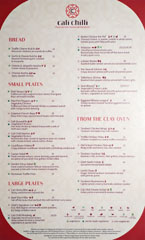

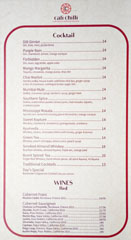
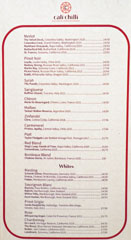

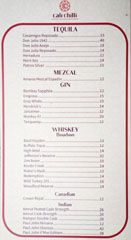
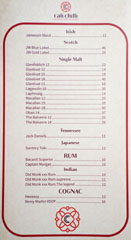
Here we see the menu, which is decidedly fusion-y, with dishes that I wouldn't anticipate at an Indian spot. And though the restaurant opened without a liquor license, it has one now, so to drink, you get an array of cocktails, a fairly lengthy but expected wine list, a smattering of beer, and a decent selection of spirits. Click for larger versions.
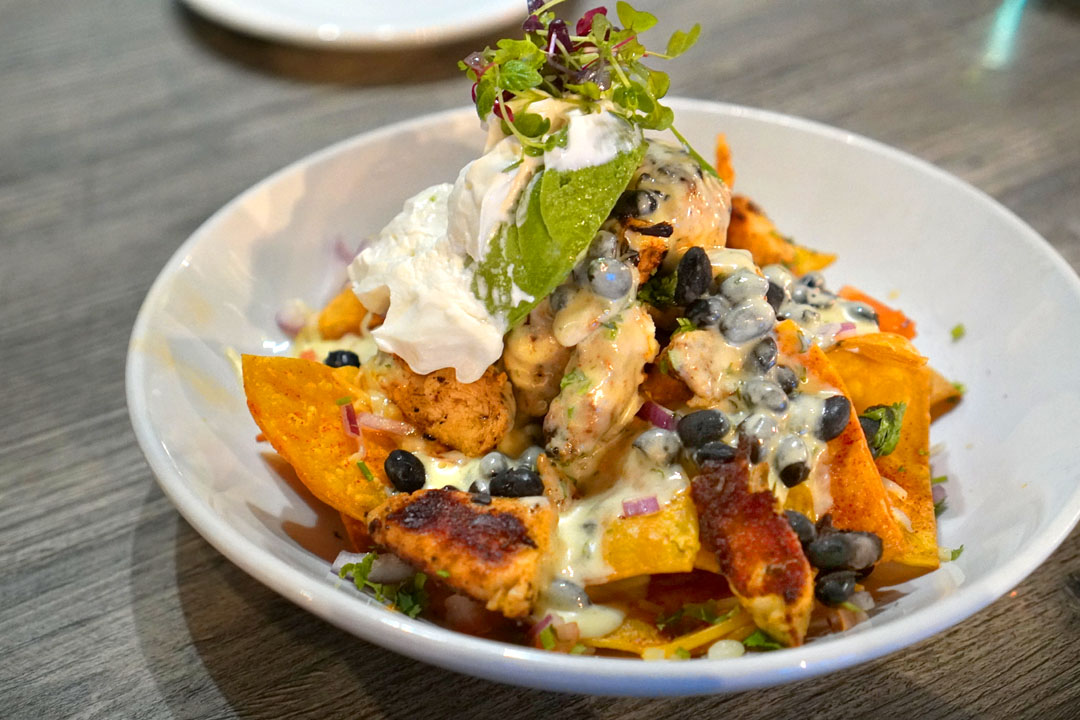
Cali Chilli Nachos (Chicken) [$16.00] | Homemade chips tossed in signature spice mix loaded with chicken & beef, salsa & nacho cheese
Given my propensity for nachos, this was a must-try, and turned out better than expected. The hero here was the chicken itself, which came out tender and teeming with smoky savor. It made sense with accoutrements of sweetly-spiced tortilla chips, beans, avocado, and sour cream, while that cheese sauce helped tie it all together.
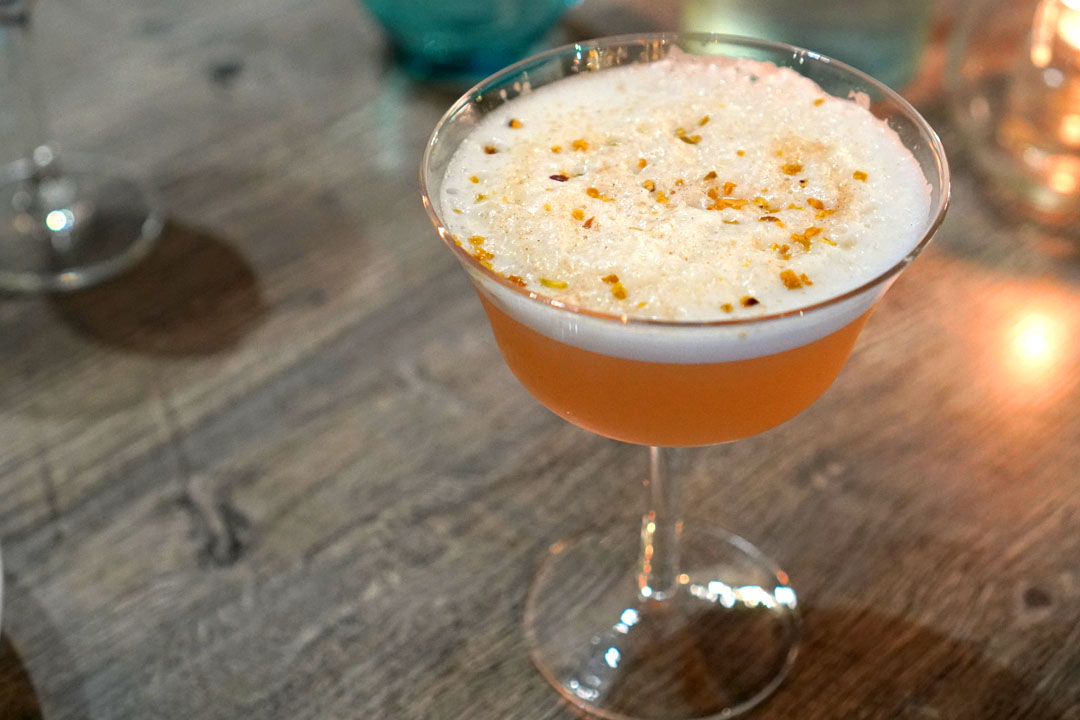
Forbidden [$14.00] | Gin, ouzo, egg white, apple cider
We made our way through a few cocktails tonight, and this first one was all about pervasive notes of anise, softened by cider and egg white, with some nutty bits on top.
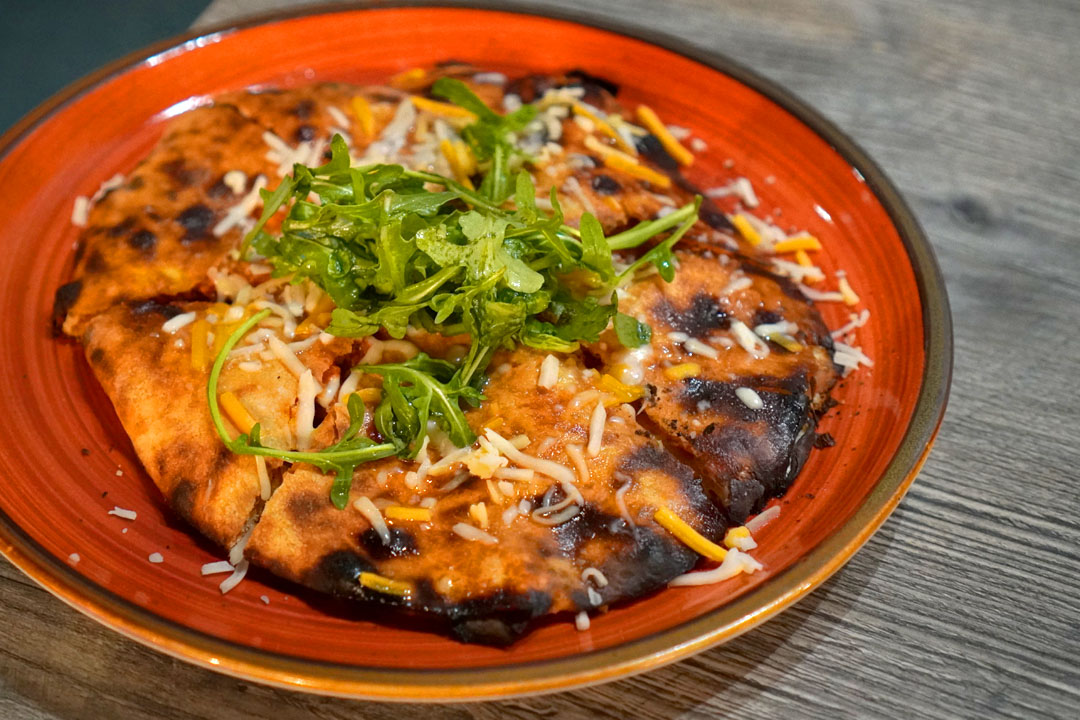
Chorizo Kulcha [$12.00] | Spicy spanish chorizo
This stuffed kulcha showcased the signature sour spice of chorizo, and curiously enough, actually reminded us of a bean and cheese burrito at times. Arugula functioned as a zippy counterpoint, and I liked the char and suppleness of the bread itself, too.
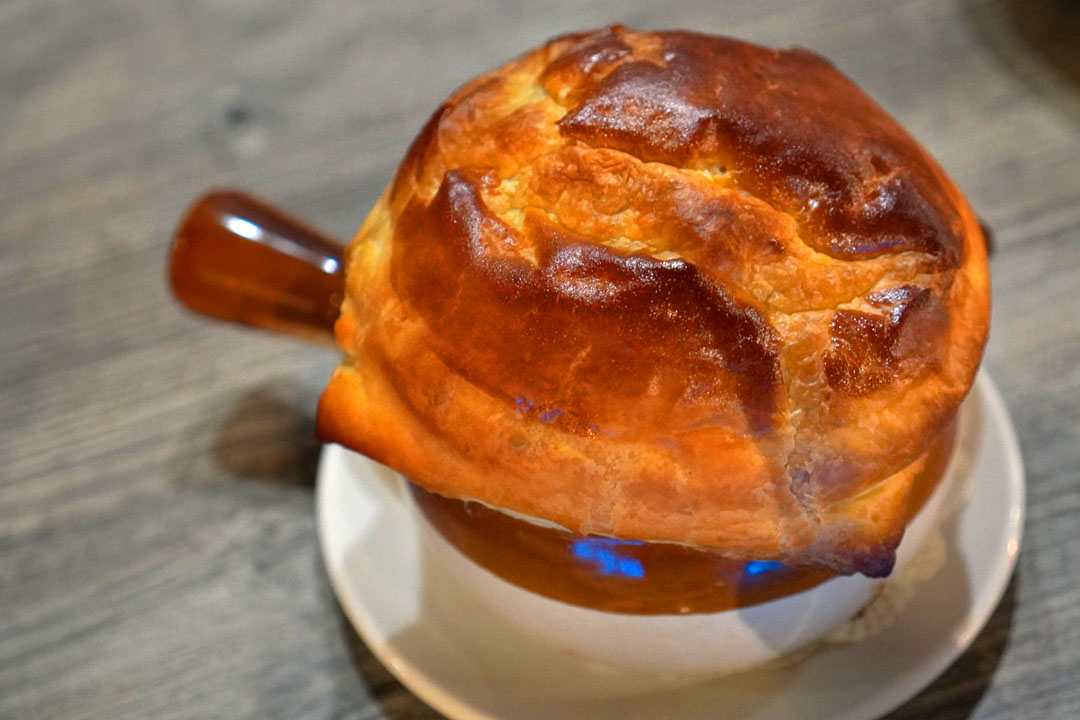
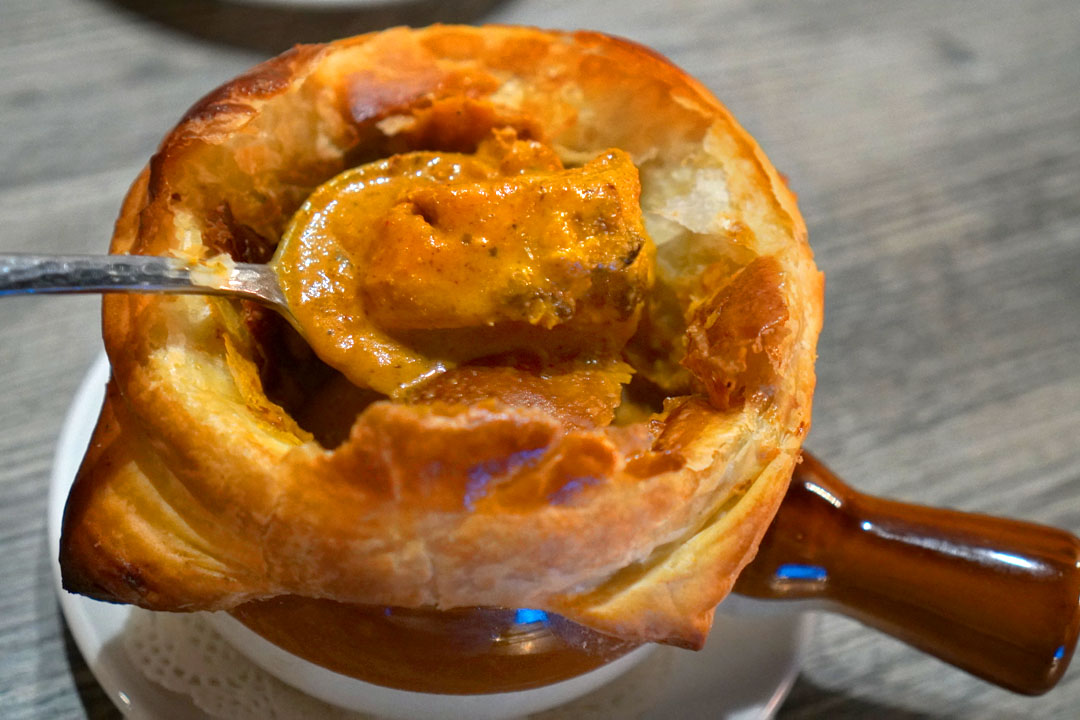
Butter Chicken Pot Pie [$26.00] | Charred chicken or paneer cooked in whole spices, tomato gravy with flaky puff pastry
I'm a sucker for pot pies in general (having started off with Stouffer's' during my childhood), so this was another must-order. The pie's pastry crust was as flaky as I'd hoped, while the murgh makhani hiding inside ate tender and buttery, with a classic tomato-fueled tang.
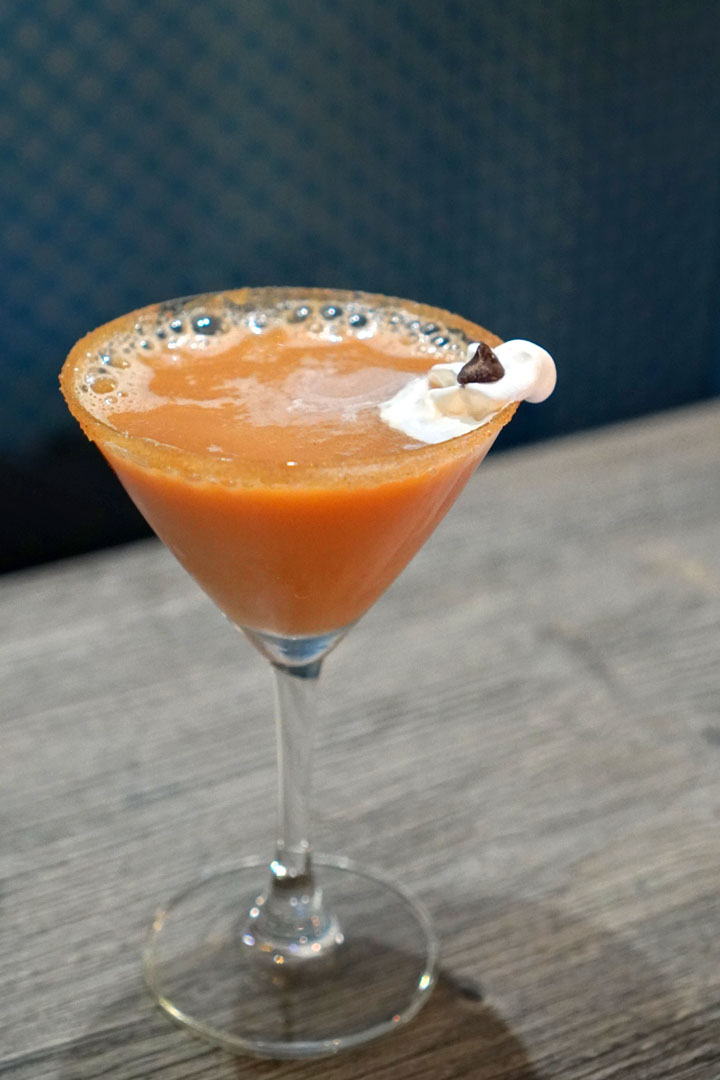
Chai Martini [$14.00] | Vanilla vodka, house made cold brew chai tea, ginger syrup, a mix of cinnamon, nutmeg & brown sugar rim
Our second beverage definitely displayed all the sweet-n-spicy notes that you'd want from masala chai, and this sensation was only further heightened by the drink's sugared rim. It was all quite dessert-y, so we actually saved the cocktail for the end of the meal.
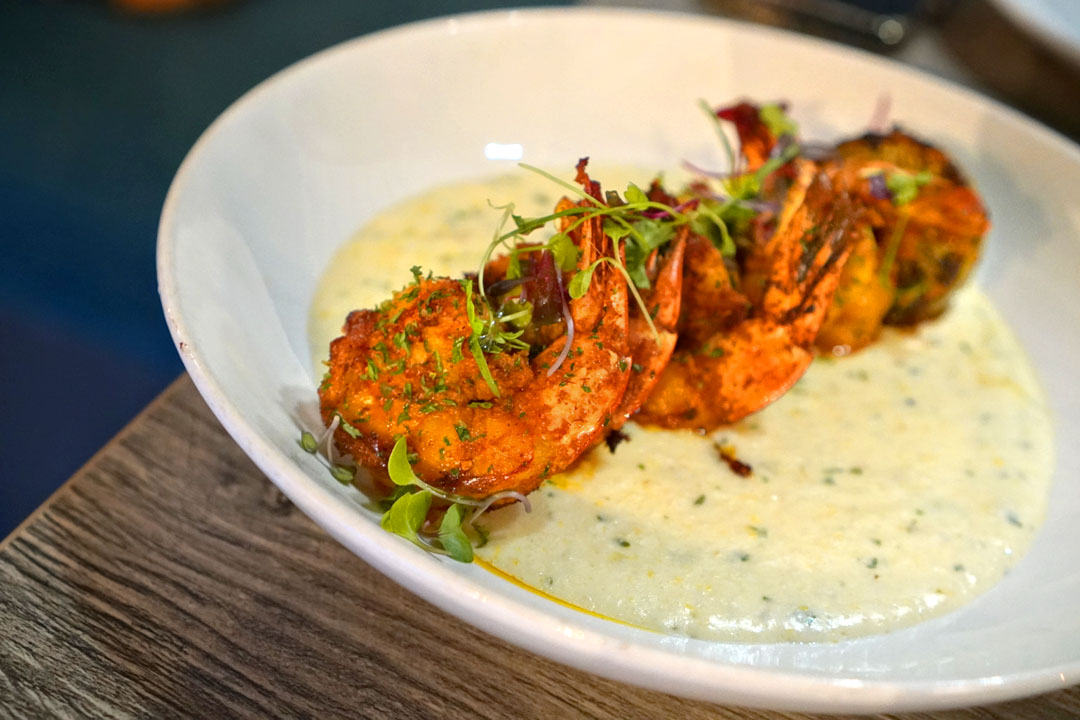
Tellicherry Shrimp [$20.00] | Roasted black pepper shrimp served with buttery grits
Shrimp were cooked a tad more than I would've liked, but this hardly posed a problem given how beautifully spiced and smoky they were. A pretty effective riff on shrimp and grits.
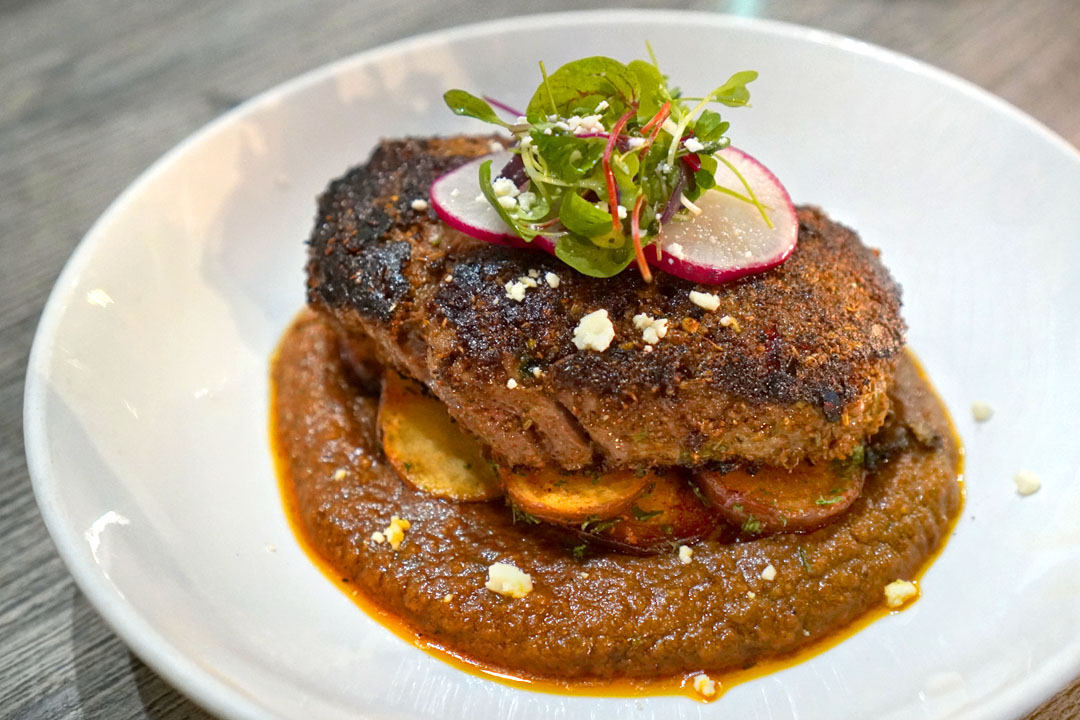
Chef's Signature Cut [$49.00] | 8 oz. filet mignon served with cumin potatoes & a tangy vindaloo sauce
Beef tenderloin is just about the last thing one would typically expect to eat at an Indian restaurant, which is what actually piqued our interest in the dish. Cooked medium, the steak arrived fork-tender and delectably seasoned, and matched up easily with the hearty cuts of potato and that piquant vindaloo sauce. Surprisingly good.

Smoked Almond Whiskey [$18.00] | Bourbon whiskey, almond liqueur, triple sec, orange peel
This cocktail was the booziest of the bunch, its bevy of bittersweet, medicinal notes leading to flavors of almond on the back end.
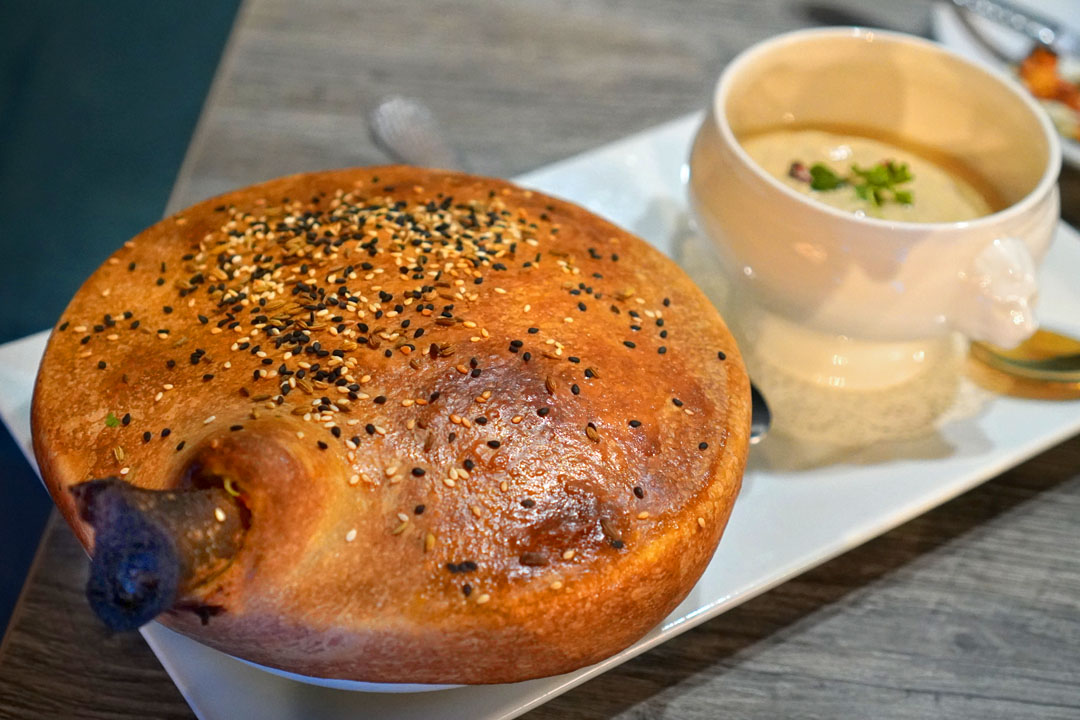
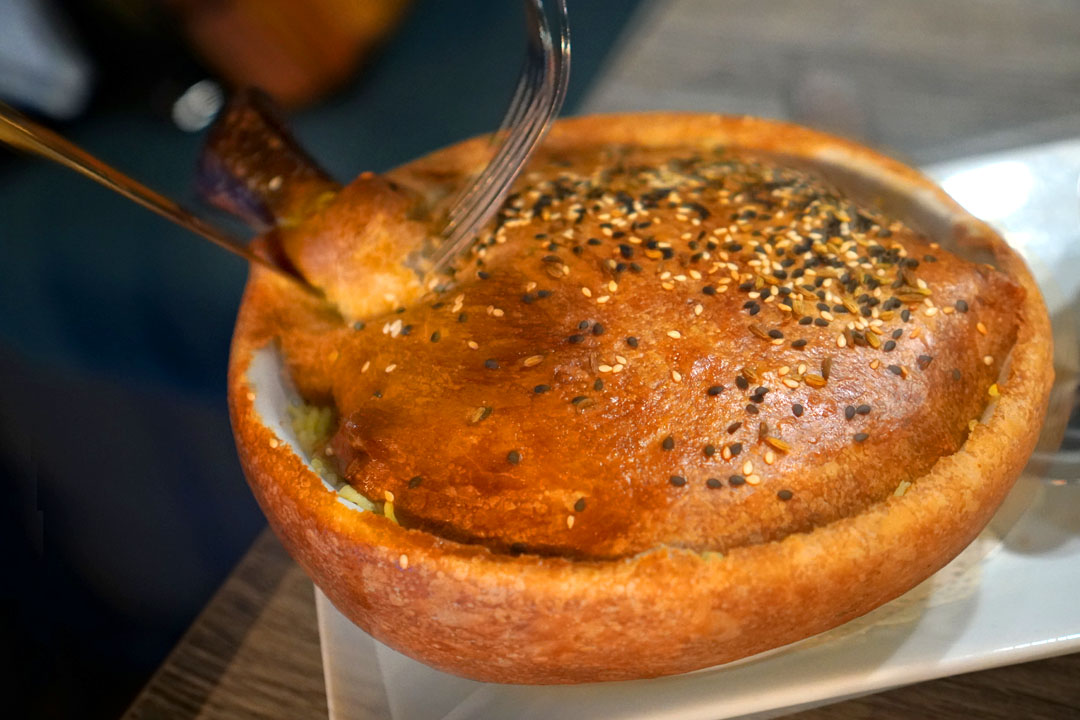
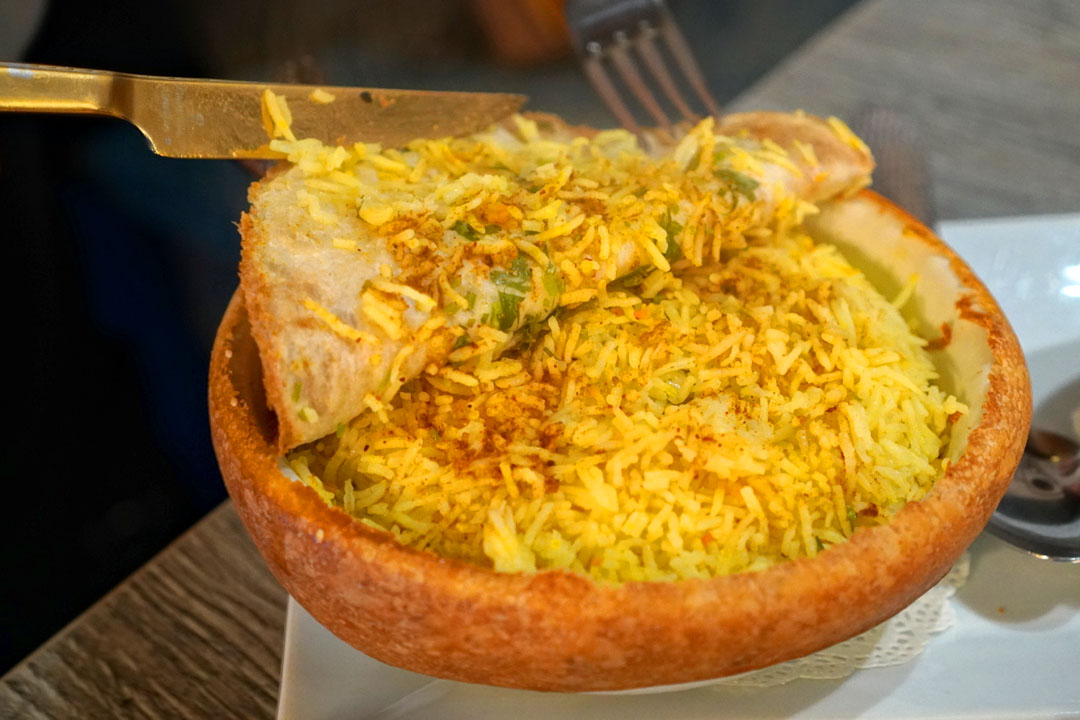
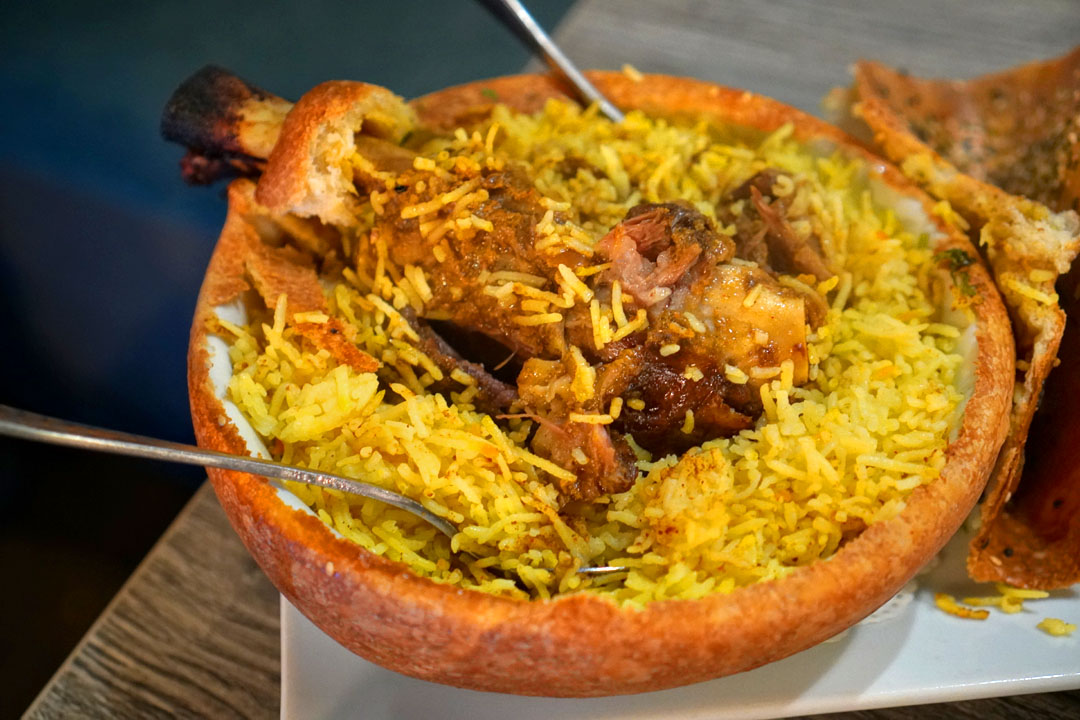
Dum Biryani (Lamb) [$26.00] | Aromatic saffron basmati rice with spices and marinated chicken, vegetables or lamb shank
Done up dum pukht style, the biryani was another favorite. The rice itself was spot-on texturally and delicately seasoned, marrying seamlessly with a deeply-spiced, falling-apart-tender lamb shank, while the accompanying raita lightened the mood. I was also quite a fan of that pardah (bread formed from the dish's dough seal) as well, with all of its nutty sesame bits.
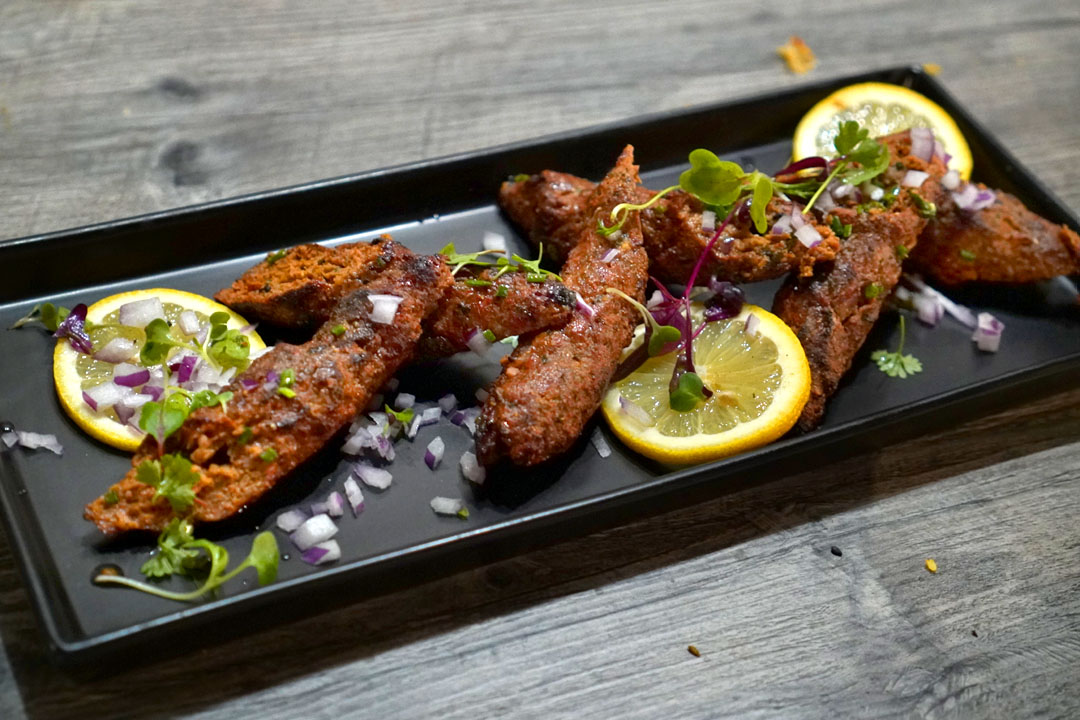
Gilafi Seekh Kabab [$28.00] | Succulent minced lamb kababs
Seekh kebabs are generally a good decision, and that was certainly the case tonight. The meat came out as juicy as I was hoping for, and was mouthwateringly spiced, pairing swimmingly with the zing of raw onion and even better with the brightness of mint chutney.
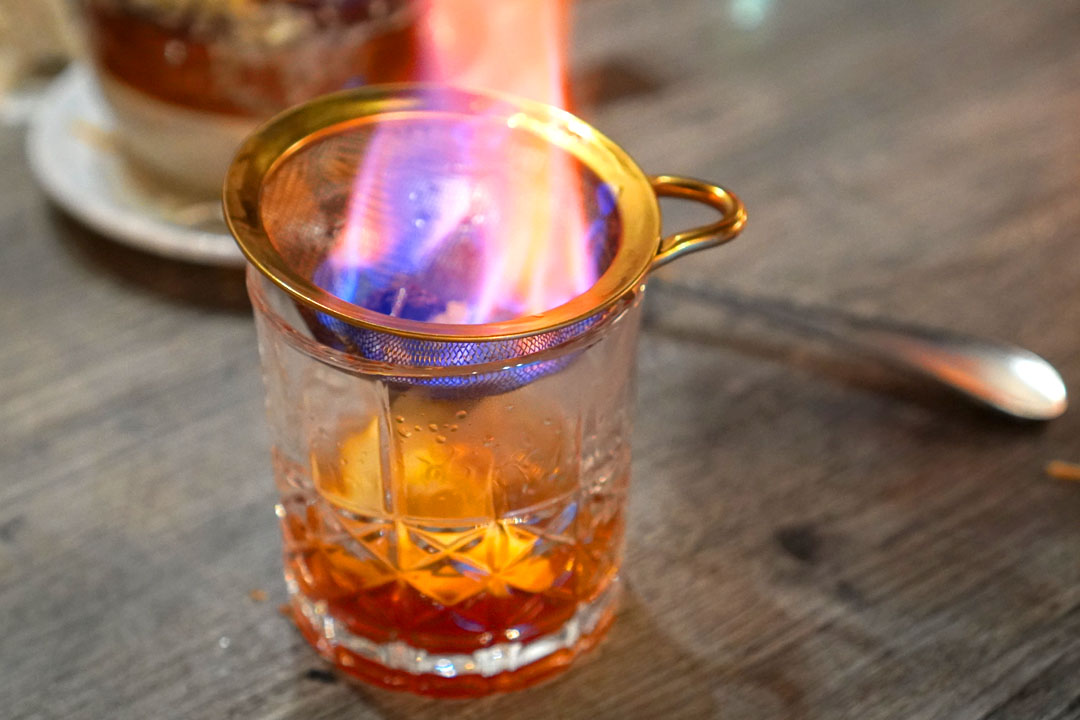
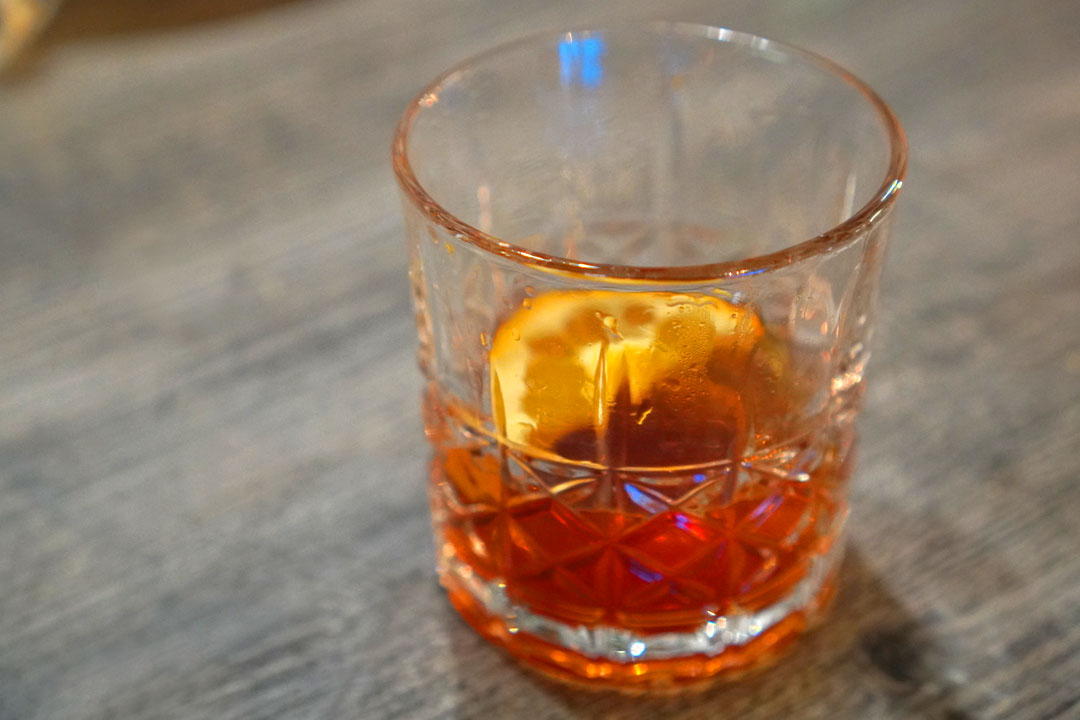
Burnt Spiced Tea [$20.00] | Single Malt Whiskey, burnt whole spices, all spice liqueur, 43 liqueur
Our next cocktail arrived with some tableside pyrotechnics, and was served hot. I found it the most intense drink of the night, with a boatload of sweet spices commingled with plenty of boozy heat and contrasting notes of bitterness and citrus.

Tandoori Sea Bass [$40.00] | Kashmiri chilli, turmeric, flash grilled, a house delicacy
Sea bass had a properly flaky, lush, buttery texture, and boasted a healthy amount of smoke and sear to boot. I did find the fish slightly over-seasoned, but it was still quite enjoyable nonetheless.
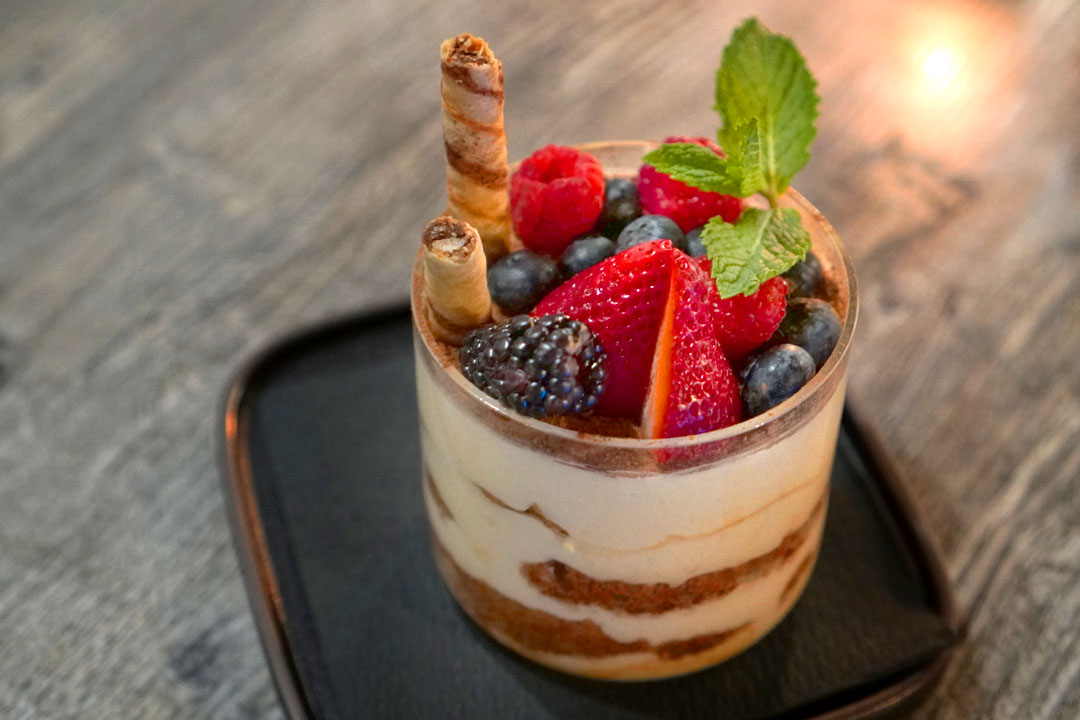
Chai Tiramisu [$15.00] | Tiramisu with cardamom & cinnamon chai
Moving into dessert now, tiramisu had the coffee and chocolate flavors one would expect, though I wanted those chai spices to be more forcefully conveyed.
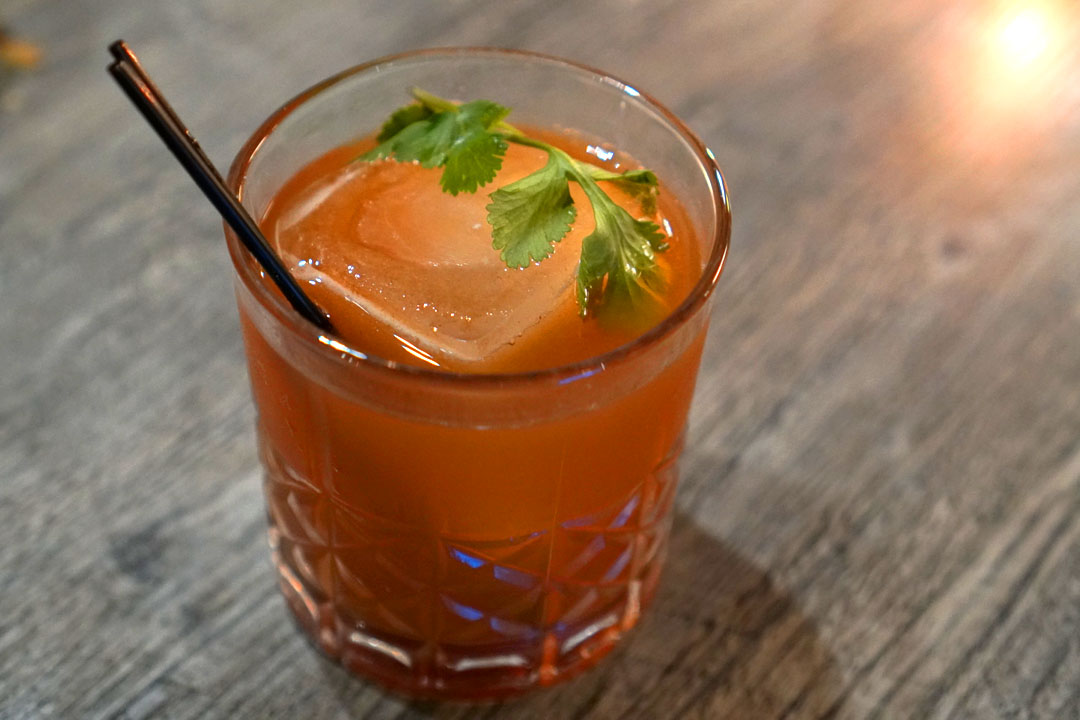
Mississippi Masala [$14.00] | Spiced rum, tamarind chutney, pierre ferrand dry orange curaçao
In our final cocktail, the sweet 'n' sour nuances of tamarind were well represented, set over a smooth backbone of rum and bittersweet citrus.

Kulfi [$13.00] | Creamy pistachio & saffron ice cream, dessert noodles
A dense, crumbly, yet creamy puck of kulfi conveyed the subtle spice of saffron and the nuttiness of pistachio, all while falooda noodles mixed things up texturally.
I was somewhat wary coming into here given the restaurant's slightly odd location, concept, and menu, but left pretty impressed. Mural's flavors were largely on point, and I appreciated the "American" twists on the cuisine, which, somewhat to my surprise, never veered overly gimmicky. My only gripe would be the service, which was a bit rough around the edges. But even so, I'd say that Cali Chilli is one of the top Indian dining experiences I've had in the Los Angeles area, and represents another feather in the LBC dining scene's cap.
4111 N Viking Way, Long Beach, CA 90808
562-354-6644
www.cali-chilli.com
Sun 03/03/2024, 06:35p-09:05p

I was looking to have dinner in the Long Beach area and decided to check out Cali Chilli, a deliberately "unauthentic" Indian spot that I'd been curious about ever since its debut in May 2022. The place is owned by Praveen Nair Ranju, but far more intriguing is who he's brought on to design the menu: Manjunath Mural, a Michelin-starred chef who's known for blending Indian cookery with unorthodox influences endemic to the locales of his restaurants.
About the Chef: Mural was born in May 1973 and grew up in Mumbai (then known as Bombay). He was raised in a family of doctors, and not surprisingly, they didn't agree with his desire to pursue a career in hospitality. Nevertheless, in 1993, he enrolled at the Institute of Hotel Management, Catering Technology and Applied Nutrition (IHMCTAN) in Bangalore, and though he initially wanted to focus on the hotel side of things, eventually decided that he actually wanted to become a proper chef. Following graduation, Mural returned to Mumbai and secured employment at The Resort, and later the Centaur Hotel, during which time he was able to work for both Sanjeev Kapoor and Milind Sovani. In 2006, he relocated to Singapore to open Sovani's new project, The Song of India. He subsequently moved up the ranks from sous to Executive Chef, and even garnered a Michelin star in the inaugural Singapore guide (July 2016), a feat repeated again the next three years.
The success of The Song of India allowed Mural to open up a number of other eateries. In September 2018, he debuted Heritij in Brisbane, which was followed that November by Kokum, also in Brisbane; both were in partnership with Sridhar Penumechu and Nick Pinn. Heritij, however, closed at the end of July 2019, shortly before the launch of Gunpowder Kitchen & Bar in Jakarta. Unfortunately, Gunpowder, Kokum, and even The Song of India all shuttered during the early months of the pandemic. Mural did bounce back, though, and in December 2020, teamed up with Sanjay Rekhi and opened ADDA in Singapore. His latest effort is Hello Butter Chicken, a food stall located inside Singapore's Cosford Container Park that bowed at the end of January this year.

Cali Chilli is located at the Parkview Village development in Long Beach's Lakewood Village neighborhood, and takes over a storefront that was previously home to The Dog House (which appears to have closed during the pandemic), as well as Blue Dog Tavern and Tuck's Tavern before that. The same basic layout from the Dog House days remains, though the space has definitely been gussied up.







Here we see the menu, which is decidedly fusion-y, with dishes that I wouldn't anticipate at an Indian spot. And though the restaurant opened without a liquor license, it has one now, so to drink, you get an array of cocktails, a fairly lengthy but expected wine list, a smattering of beer, and a decent selection of spirits. Click for larger versions.

Cali Chilli Nachos (Chicken) [$16.00] | Homemade chips tossed in signature spice mix loaded with chicken & beef, salsa & nacho cheese
Given my propensity for nachos, this was a must-try, and turned out better than expected. The hero here was the chicken itself, which came out tender and teeming with smoky savor. It made sense with accoutrements of sweetly-spiced tortilla chips, beans, avocado, and sour cream, while that cheese sauce helped tie it all together.

Forbidden [$14.00] | Gin, ouzo, egg white, apple cider
We made our way through a few cocktails tonight, and this first one was all about pervasive notes of anise, softened by cider and egg white, with some nutty bits on top.

Chorizo Kulcha [$12.00] | Spicy spanish chorizo
This stuffed kulcha showcased the signature sour spice of chorizo, and curiously enough, actually reminded us of a bean and cheese burrito at times. Arugula functioned as a zippy counterpoint, and I liked the char and suppleness of the bread itself, too.


Butter Chicken Pot Pie [$26.00] | Charred chicken or paneer cooked in whole spices, tomato gravy with flaky puff pastry
I'm a sucker for pot pies in general (having started off with Stouffer's' during my childhood), so this was another must-order. The pie's pastry crust was as flaky as I'd hoped, while the murgh makhani hiding inside ate tender and buttery, with a classic tomato-fueled tang.

Chai Martini [$14.00] | Vanilla vodka, house made cold brew chai tea, ginger syrup, a mix of cinnamon, nutmeg & brown sugar rim
Our second beverage definitely displayed all the sweet-n-spicy notes that you'd want from masala chai, and this sensation was only further heightened by the drink's sugared rim. It was all quite dessert-y, so we actually saved the cocktail for the end of the meal.

Tellicherry Shrimp [$20.00] | Roasted black pepper shrimp served with buttery grits
Shrimp were cooked a tad more than I would've liked, but this hardly posed a problem given how beautifully spiced and smoky they were. A pretty effective riff on shrimp and grits.

Chef's Signature Cut [$49.00] | 8 oz. filet mignon served with cumin potatoes & a tangy vindaloo sauce
Beef tenderloin is just about the last thing one would typically expect to eat at an Indian restaurant, which is what actually piqued our interest in the dish. Cooked medium, the steak arrived fork-tender and delectably seasoned, and matched up easily with the hearty cuts of potato and that piquant vindaloo sauce. Surprisingly good.

Smoked Almond Whiskey [$18.00] | Bourbon whiskey, almond liqueur, triple sec, orange peel
This cocktail was the booziest of the bunch, its bevy of bittersweet, medicinal notes leading to flavors of almond on the back end.




Dum Biryani (Lamb) [$26.00] | Aromatic saffron basmati rice with spices and marinated chicken, vegetables or lamb shank
Done up dum pukht style, the biryani was another favorite. The rice itself was spot-on texturally and delicately seasoned, marrying seamlessly with a deeply-spiced, falling-apart-tender lamb shank, while the accompanying raita lightened the mood. I was also quite a fan of that pardah (bread formed from the dish's dough seal) as well, with all of its nutty sesame bits.

Gilafi Seekh Kabab [$28.00] | Succulent minced lamb kababs
Seekh kebabs are generally a good decision, and that was certainly the case tonight. The meat came out as juicy as I was hoping for, and was mouthwateringly spiced, pairing swimmingly with the zing of raw onion and even better with the brightness of mint chutney.


Burnt Spiced Tea [$20.00] | Single Malt Whiskey, burnt whole spices, all spice liqueur, 43 liqueur
Our next cocktail arrived with some tableside pyrotechnics, and was served hot. I found it the most intense drink of the night, with a boatload of sweet spices commingled with plenty of boozy heat and contrasting notes of bitterness and citrus.

Tandoori Sea Bass [$40.00] | Kashmiri chilli, turmeric, flash grilled, a house delicacy
Sea bass had a properly flaky, lush, buttery texture, and boasted a healthy amount of smoke and sear to boot. I did find the fish slightly over-seasoned, but it was still quite enjoyable nonetheless.

Chai Tiramisu [$15.00] | Tiramisu with cardamom & cinnamon chai
Moving into dessert now, tiramisu had the coffee and chocolate flavors one would expect, though I wanted those chai spices to be more forcefully conveyed.

Mississippi Masala [$14.00] | Spiced rum, tamarind chutney, pierre ferrand dry orange curaçao
In our final cocktail, the sweet 'n' sour nuances of tamarind were well represented, set over a smooth backbone of rum and bittersweet citrus.

Kulfi [$13.00] | Creamy pistachio & saffron ice cream, dessert noodles
A dense, crumbly, yet creamy puck of kulfi conveyed the subtle spice of saffron and the nuttiness of pistachio, all while falooda noodles mixed things up texturally.
I was somewhat wary coming into here given the restaurant's slightly odd location, concept, and menu, but left pretty impressed. Mural's flavors were largely on point, and I appreciated the "American" twists on the cuisine, which, somewhat to my surprise, never veered overly gimmicky. My only gripe would be the service, which was a bit rough around the edges. But even so, I'd say that Cali Chilli is one of the top Indian dining experiences I've had in the Los Angeles area, and represents another feather in the LBC dining scene's cap.